Etiqueta "python"
Se han encontrado 41 Coincidencias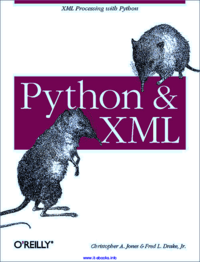
Python & XML
Trabajar con ficheros XML desde Python.
134 Visitas | 187 Descargas | 2014-02-22 02:55:14 | abelm
El libro comienza con un capítulo introductorio. Luego introducción a XML. El capítulo 3 está dedicado a SAX desde python, al igual que el 4 al DOM. Querying XML con XPath(5). Transformar XML con XSLT. Validación de XML. Python Internet APIs. Python web services and SOAP. Python y sistemas distribuidos usando XML. El libro posee además 6 valiosos apéndices donde se pueden leer: las definiciones de XML, Python SAX API, Python DOM API, MSXML y otras herramientas de python para el trabajo con XML.
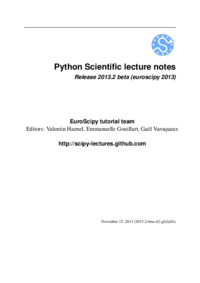
Python Scientific lecture notes
Python para programación científica
112 Visitas | 163 Descargas | 2014-02-26 20:57:48 | alvarojs
- Rich collection of already existing bricks corresponding to classical numerical methods or basic actions: we don’t want to re-program the plotting of a curve, a Fourier transform or a fitting algorithm. Don’t reinvent the wheel! - Easy to learn: computer science is neither our job nor our education. We want to be able to draw a curve, smooth a signal, do a Fourier transform in a few minutes. - Easy communication with collaborators, students, customers, to make the code live within a lab or a company: the code should be as readable as a book. Thus, the language should contain as few syntax symbols or unneeded routines as possible that would divert the reader from the mathematical or scientific understanding of the code. - Efficient code that executes quickly... but needless to say that a very fast code becomes useless if we spend too much time writing it. So, we need both a quick development time and a quick execution time. - A single environment/language for everything, if possible, to avoid learning a new software for each new problem.

PyGTK 2.0 Tutorial
Interfaces Gráficas
118 Visitas | 161 Descargas | 2014-03-03 19:14:51 | eancedeg
PyGTK 2.0 is a set of Python modules which provide a Python interface to GTK+ 2.X. Throughout the rest of this document PyGTK refers to the 2.X version of PyGTK and GTK and GTK+ refer to the 2.X version of GTK+. The primary web site for PyGTK is www.pygtk.org [http://www.pygtk.org].
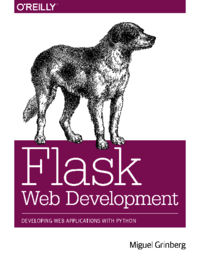
Flask Web Development
Python Web Framework
93 Visitas | 107 Descargas | 2014-10-23 19:17:52 | efirvida
Flask stands out from other frameworks because it lets developers take the driver’s seat and have full creative control of their applications. Maybe you have heard the phrase “fighting the framework” before. This happens with most frameworks when you decide to solve a problem with a solution that isn’t the official one. It could be that you want to use a different database engine, or maybe a different method of authenticating users. Deviating from the path set by the framework’s developers will give you lots of headaches. Flask is not like that. Do you like relational databases? Great. Flask supports them all. Maybe you prefer a NoSQL database? No problem at all. Flask works with them too. Want to use your own homegrown database engine? Don’t need a database at all? Still fine. With Flask you can choose the components of your application or even write your own if that is what you want. No questions asked! The key to this freedom is that Flask was designed from the start to be extended. It comes with a robust core that includes the basic functionality that all web applications need and expects the rest to be provided by some of the many third-party extensions in the ecosystem and, of course, by you.
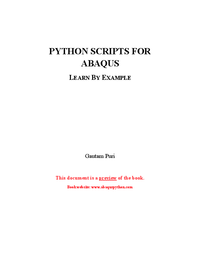
PYTHON SCRIPTS FOR ABAQUS LEARN BY EXAMPLE
96 Visitas | 208 Descargas | 2014-10-29 13:58:51 | efirvida
The aim of this book is not to teach you every single built-in scripting method offered by Abaqus. There are literally hundreds of these, and chances are you will only use a few of them for your own simulations. We’ll focus on these, and put you in a position where you can branch out on your own. For the record all the keywords and methods of the Abaqus Scripting Interface are listed in the Abaqus Scripting Reference Manual. The documentation also consists of a manual called the Abaqus Scripting User’s Manual which provides helpful advice on different scripting topics. You could potentially learn to write Abaqus scripts in Python from the documentation itself, as many people (such as me) have had to do in the past. But as a beginner you will likely find yourself overwhelmed by the sheer quantity of information provided there. You will spend a lot of time making avoidable mistakes and discovering for yourself, after hours (or days or months) of trial and error, the correct method to accomplish a given task through a script. This book gives you the guidance you need to start writing complex scripts right off the bat. Once you’ve read through all the pages you will have the knowledge and the confidence to write your own scripts for finite element simulations in Abaqus, and will then be able to refer to the Abaqus documentation for more information specific to your research task.
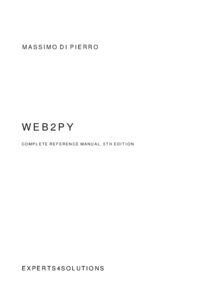
Web2py
Desarrollo Web
95 Visitas | 139 Descargas | 2014-12-15 21:16:59 | eacarmona
Existen múltiples framework de desarrollo web para muchos lenguajes, web2py es un framework escrito en Python para la creación de aplicaciones web con Python...
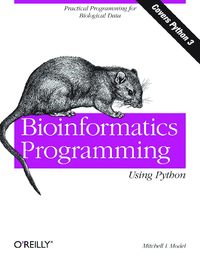
Bioinformatic programming with Python
Programación en el área de bioinformática utilizando Python como lenguaje de Programación
91 Visitas | 134 Descargas | 2015-07-17 18:16:31 | alejandromorales
The purpose of this book is to show the reader how to use the Python programming language to facilitate and automate the wide variety of data manipulation tasks encountered in life science research and development. It is designed to be accessible to readers with a range of interests and backgrounds, both scientific and technical. It emphasizes practical programming, using meaningful examples of useful code. In addition to meeting the needs of individual readers, it can also be used as a textbook for a one-semester upper-level undergraduate or graduate-level course. This book is designed to teach you bioinformatics software development. There is no computational biology here: no statistics, formulas, equations—not even explanations of the algorithms that underlie commonly used informatics software. The book’s examples are all based on the kind of data life science researchers work with and what they do with it. The book focuses on practical data management and manipulation tasks. The term “data” has a wide scope here, including not only the contents of databases but also the contents of text files, web pages, and other information sources. Examples focus on genomics, an area that, relative to others, is more mature and easier to introduce to people new to the scientific content of bioinformatics, as well as dealing with data that is more amenable to representation and manipulation in software. Also, and not incidentally, it is the part of bioinformatics with which the author is most familiar.
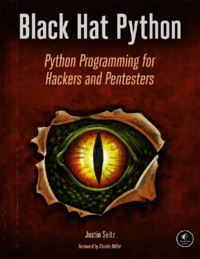
Black Hat Python
Python Programming for Hackers and Pentesters
200 Visitas | 278 Descargas | 2015-07-17 19:35:15 | adbenitez
Black Hat Python, Python Programming for Hackers es un libro muy interesante para los que deseen adentrarse en el mundo del python,de la mano de su autor (el libro fue publicado por Justin Seitz)
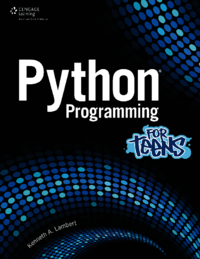
Python programming for teens
Programming
112 Visitas | 122 Descargas | 2015-10-26 04:31:47 | mmartin
If you want to learn how to program in Python, one of today's most popular computer programming languages, PYTHON PROGRAMMING FOR TEENS is the perfect first step. Written by teacher, author, and Python expert Kenneth Lambert, this book will help you build a solid understanding of programming and prepare you to make the jump to other languages and more advanced instruction. In PYTHON PROGRAMMING FOR TEENS, you will learn problem solving, program development, the basics of using classes and objects, and more. Special topics include 2-D geometry, fractals, animations, and recursion. The book's topics are illustrated using turtle graphics, a system that provides graphical output from programs and makes learning more fun. Get started programming today with PYTHON PROGRAMMING FOR TEENS.
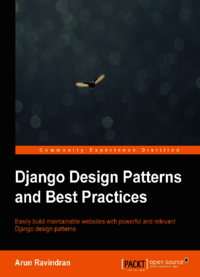
Django Design Patterns and Best Practices
Django Design Patterns and Best Practices
110 Visitas | 174 Descargas | 2016-02-15 15:31:36 | pecarrazana
Django is one of the most popular web frameworks in use today. It powers large websites, such as Pinterest, Instagram, Disqus, and NASA. With a few lines of code, you can rapidly build a functional and secure website that can scale to millions of users. This book attempts to share solutions to several common design problems faced by Django developers. Sometimes, there are several solutions but we often wonder whether there is a recommended approach. Experienced developers frequently use certain idioms while deliberately avoiding certain others. This book is a collection of such patterns and insights. It is organized into chapters each covering a key area of the framework, such as Models, or an aspect of web development, such as Debugging. The focus is on building clean, modular, and more maintainable code. Every attempt has been made to present up-to-date information and use the latest versions. Django 1.7 comes loaded with exciting new features, such as built-in schema migrations and app reloading. Python 3.4 is the bleeding edge of the language with several new modules, such as asyncio. Both, both of which have been used here. Superheroes are a constant theme throughout the book. Most of the code examples are about building SuperBook—a social network of superheroes. As a novel way to present the challenges of a web development project, an exciting fictional narrative has been woven into each chapter in the form of story boxes.
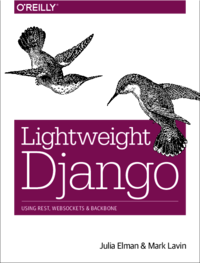
Lightweight Django
Lightweight Django
85 Visitas | 71 Descargas | 2016-02-15 15:36:08 | pecarrazana
Why This Book? We wanted to write this book primarily because we love Django. The community is amazing, and there are so many resources to learn about Django and to develop appli? cations using it. However, we also felt like many of these resources, including the official Django documentation, put too much emphasis on the power of Django and not on its decoupled design. Django is a well-written framework, with numerous utilities for building web applications included. What we want this book to highlight is how you can break apart and potentially replace these components to pick and choose what best suits the application you want to build. Similarly, we wanted to break down the typical structure of Django projects and applications. Our goal is to get you to stop asking “how do I do X in Django?” and instead ask “does Django provide anything to help me do X, and if not, is something available in the community?”
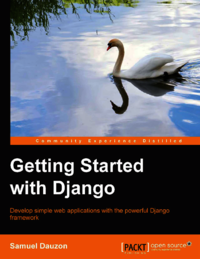
Getting Started with Django
Django programming
88 Visitas | 87 Descargas | 2016-02-15 15:38:35 | pecarrazana
For some years, web development has evolved through frameworks. Web development has become more efficient and has improved in quality. Django is a very sophisticated and popular framework. A framework is a set of tools designed to facilitate and standardize development. It allows the developer to benefit from very practical tools to minimize the development time. However, developing with frameworks requires knowledge about the framework and its proper usage. This book uses a step-by-step pedagogy to help novice developers learn how to easily deal with the Django framework. The examples in this book explain the development of a simple web tool: a text-based task manager.
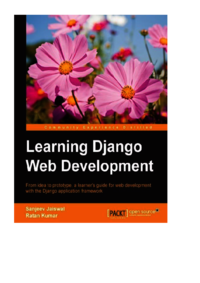
Learning Django Web Development
Django Web Development
115 Visitas | 146 Descargas | 2016-02-15 15:44:45 | pecarrazana
Django, written in Python, is a web application framework designed to build complex web applications quickly without any hassle. It loosely follows the MVC pattern and adheres to the Don't Repeat ourself principle, which makes a database- driven application efficient and highly scalable, and is by far the most popular and mature Python web framework. This book is a manual that will help you build a simple yet an effective Django web application. It starts by introducing Django to you and teaches you how to set it up and code simple programs. You will then learn to build your first Twitter-like application. Later on, you will be introduced to hashtags, Ajax (to enhance the user interface), and tweets. You will then move on to create an administration interface, learn database connectivity, and use third-party libraries. Then, you will learn to debug and deploy Django projects and will also get a glimpse of Django with AngularJS and Elasticsearch. By the end of this book, you will be able to leverage the Django framework to develop a fully functional web application with minimal effort.
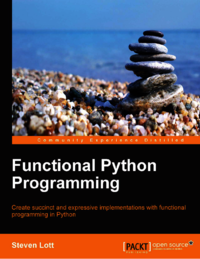
Functional Python Programming
104 Visitas | 110 Descargas | 2016-04-05 15:26:52 | efirvida
Programming languages sometimes fit neatly into tidy categories like imperative and functional. Imperative languages might further subdivide into those that are procedural and those that include features for object-oriented programming. The Python language, however, contains aspects of all of these three language categories. Though Python is not a purely functional programming language, we can do a great deal of functional programming in Python.
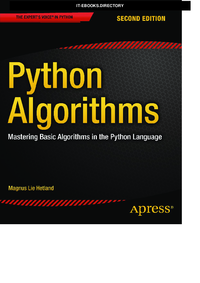
Python Algorithms
Python Algorithms, Second Edition explains the Python approach to algorithm analysis and design.
106 Visitas | 96 Descargas | 2018-03-14 11:53:58 | moliver
Python Algorithms, Second Edition explains the Python approach to algorithm analysis and design. Written by Magnus Lie Hetland, author of Beginning Python, this book is sharply focused on classical algorithms, but it also gives a solid understanding of fundamental algorithmic problem-solving techniques. The book deals with some of the most important and challenging areas of programming and computer science in a highly readable manner. It covers both algorithmic theory and programming practice, demonstrating how theory is reflected in real Python programs. Well-known algorithms and data structures that are built into the Python language are explained, and the user is shown how to implement and evaluate others.What youll learnHow to transform new problems to well-known algorithmic problems with efficient solutions, or show that the problems belong to classes of problems thought not to be efficiently solvableHow to analyze algorithms and Python programs using both mathematical tools and basic experiments and benchmarksHow to understand several classical algorithms and data structures in depth, and be able to implement these efficiently in PythonHow to design and implement new algorithms for new problems, using time-tested design principles and techniquesHow to speed up implementations, using a plethora of tools for high-performance computing in PythonWho this book is for The book is intended for Python programmers who need to learn about algorithmic problem-solving, or who need a refresher. Data and computational scientists employed to do big data analytic analysis should find this book useful. Game programmers and financial analysts/engineers may find this book applicable too. And, students of computer science, or similar programming-related topics, such as bioinformatics, may also find the book to be quite useful. Table of Contents1. Introduction2. The Basics3. Counting 1014. Induction and Recursion and Reduction5. Traversal: The Skeleton Key of Algorithmics6. Divide, Combine, and Conquer7. Greed Is Good? Prove It!8. Tangled Dependencies and Memoization9. From A to B with Edsger and Friends10. Matchings, Cuts, and Flows11. Hard Problems and (Limited) Sloppiness12. Pedal to the Metal: Accelerating Python13. List of Problems and Algorithms14. Graph Terminology!15. Hints for Exercises
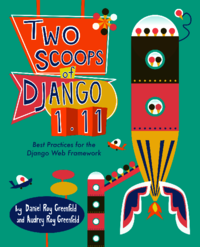
Two Scoops of Django
Django
109 Visitas | 61 Descargas | 2019-02-01 16:18:18 | josedaniel
Our aim in writing this book is to write down all of the unwritten tips, tricks, and common practices that we’ve learned over the years while working with Django. While writing, we’ve thought of ourselves as scribes, taking the various things that people assume are common knowledge and recording them with simple examples. Like the official Django documentation, this book covers how to do things in Django, illustrating various scenarios with code examples. Unlike the Django documentation, this book recommends particular coding styles, patterns, and library choices. While core Django developers may agree with some or many of these choices, keep in mind that many of our recommendations are just that: personal recommendations formed after years of working with Django.
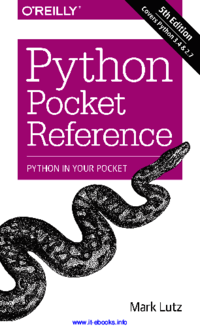
Python Pocket Reference
75 Visitas | 73 Descargas | 2019-05-21 15:25:15 | Airowlly
referencia de python util para programadores o estudiantes,el mejor lenguage que existe hasta elmomento para comenzar a aprender.
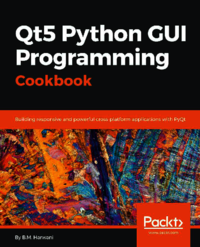
Qt5 Python GUI Programming Cookbook
65 Visitas | 64 Descargas | 2021-05-10 02:10:08 | jose.muina
Esta es una guia para el desarrollo de interfaces graficas con Pyqt. A veces se hace dificil encontrar bibliografia sobre este tema y este libro, aunque esta muy limitado toca aspectos importantes en el desarrollo de aplicaciones graficas. Ademas cuenta con ejemplos practicos y si se dirige a la pagina del autor podra descargar dichos ejemplos y probarlos usted.
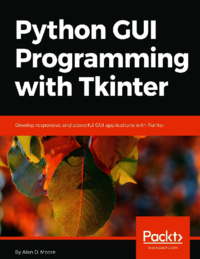
Python GUI Programming with Tkinter
GUI
62 Visitas | 48 Descargas | 2021-05-10 02:23:54 | jose.muina
Programacion de aplicaciones con interfaces de usuario con tkinter. Contiene ejemplos practicos y aborda con bastante amplitud el tema
Documentación de python-telegram-bot
Python telegram bot
100 Visitas | 70 Descargas | 2021-05-10 02:36:07 | jose.muina
Esta es la documentacion del modulo python-telegram-bot. Este modulo contiene lo necesario para crear un bot de telegram funcional y de calidad
Contribuir
Usted puede contribuir con Libros UCLV, es importante para nosotros su aporte..
Contribuir